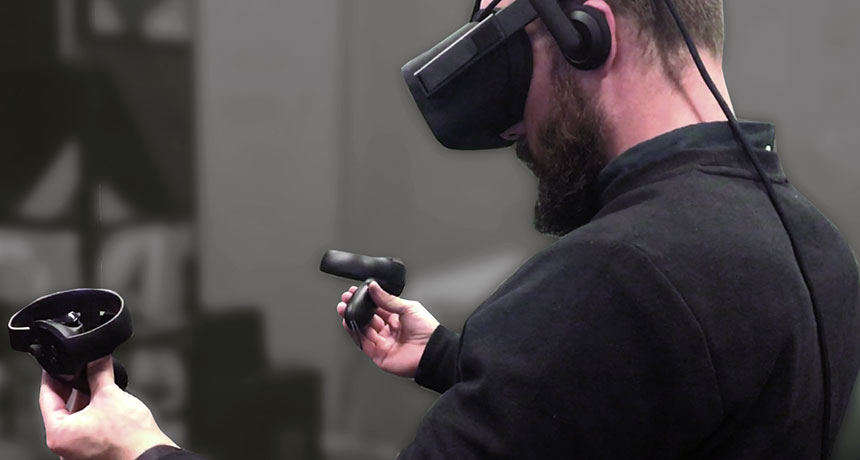Why touch can be such a creepy sensation in VR

There’s a fine line between immersive and unnerving when it comes to touch sensation in virtual reality.
More realistic tactile feedback in VR can ruin a user’s feeling of immersion, researchers report online April 18 in Science Robotics. The finding suggests that the “uncanny valley” — a term that describes how humanoid robots that look almost but not quite human are creepier than their more cartoonish counterparts — also applies to virtual touch (SN Online: 11/22/13).
Experiment participants wearing VR headsets and gripping a controller in each hand embodied a virtual avatar holding the two ends of a stick. At first, users felt no touch sensation. Then, the hand controllers gave equally strong vibrations every half-second. Finally, the vibrations were finely tuned to create the illusion that the virtual stick was being touched in different spots. For instance, stronger vibrations in the right controller gave the impression that the stick was nudged on that side.
Compared with scenarios in which users received either no touch or even buzzing sensations, participants reported feeling far less immersed in the virtual environment when they received the realistic, localized touch. This result demonstrates the existence of a tactile uncanny valley, says study coauthor Mar Gonzalez-Franco, a human-computer interaction researcher at Microsoft Research in Redmond, Washington.
But when users were shown a marble touching the virtual stick wherever they felt the localized touch, the participants found this realistic tactile feedback highly immersive rather than bothersome. The finding indicates that rich tactile feedback in VR may need to be paired with other sensory cues that explain the source of the sensation to avoid spooking users, Gonzalez-Franco says.
Better understanding how realistic touch sensations can break the VR illusion may help developers create more engaging virtual environments for games and virtual reality therapy, says Sean Follmer, a human-computer interaction researcher at Stanford University not involved in the study.